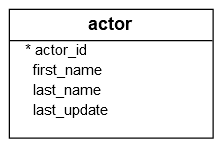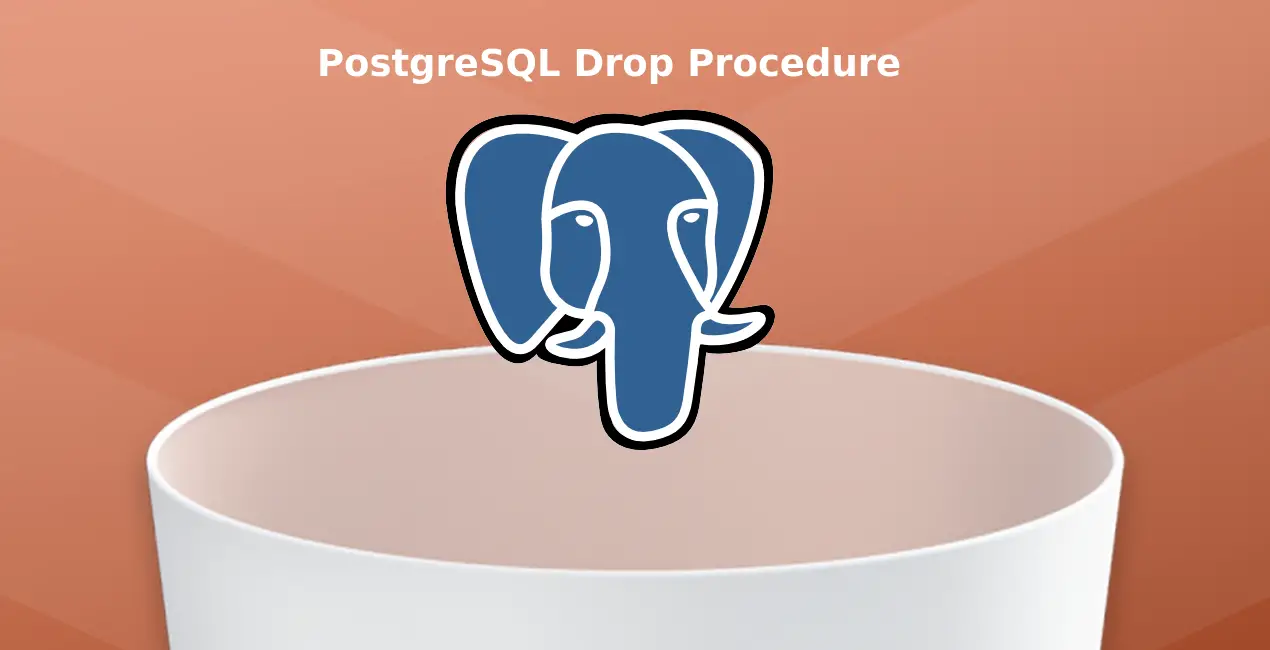
Summary: in this tutorial, you will learn how to use the PostgreSQL drop procedure statement to remove a procedure.
Introduction to PostgreSQL Drop Procedure statement
The drop procedure statement removes a stored procedure. The following illustrates the syntax of the drop procedure statement:
drop procedure [if exists] procedure_name (argument_list)
[cascade | restrict]
In this syntax:
- First, specify the name (
procedure_name) of the stored procedure that you want to remove after thedrop procedurekeywords. - Second, use the
if existsoption if you want PostgreSQL to issue a notice instead of an error if you drop a stored procedure that does not exist. - Third, specify the argument list of the stored procedure if the stored procedure’s name is not unique in the database. Note that stored procedures that have different argument lists can share the same name. PostgreSQL needs the argument list to determine which stored procedure that you want to remove.
- Finally, use the
cascadeoption to drop the stored procedures and its dependent objects and the objects that depend on those objects and so on. The default option isrestrictthat will reject the removal of the stored procedure in case it has any dependent objects.
To drop multiple stored procedures, you specify a comma-list of stored procedure names after the drop procedure keyword like this:
drop procedure [if exists] name1, name2, …;
Creating sample stored procedures
Let’s create a couple of stored procedures that manage actors so that you can learn how to drop them:

The following insert_actor() stored procedure inserts a new row into the actor table. It accepts two arguments which are the first name and last name of the actor.
create or replace procedure insert_actor(
fname varchar,
lname varchar)
language plpgsql
as $$
begin
insert into actor(first_name, last_name)
values('John','Doe');
end;
$$;
The following insert_actor stored procedure also inserts a row into the actor table. However, it accepts one argument which is the full name of the actor. The insert_actor() uses the split_part() function to split the full name into first name and last name before inserting them into the actor table.
create or replace procedure insert_actor(
full_name varchar
)
language plpgsql
as $$
declare
fname varchar;
lname varchar;
begin
-- split the fullname into first & last name
select
split_part(full_name,' ', 1),
split_part(full_name,' ', 2)
into fname,
lname;
-- insert first & last name into the actor table insert into actor(first_name, last_name) values('John','Doe');
end;
$$;
The following stored procedure deletes an actor by id:
create or replace procedure delete_actor(
p_actor_id int
)
language plpgsql
as $$
begin
delete from actor
where actor_id = p_actor_id;
end;
$$;
And the following stored procedure updates the first name and last name of an actor:
create or replace procedure update_actor(
p_actor_id int,
fname varchar,
lname varchar
)
language plpgsql
as $$
begin
update actor
set first_name = fname,
last_name = lname
where actor_id = p_actor_id;
end;
$$;
PostgreSQL Drop Procedure examples
First, attempt to drop theinsert_actor stored procedure:
drop procedure insert_actor;
PostgreSQL issued the following error:
ERROR: procedure name "insert_actor" is not unique
HINT: Specify the argument list to select the procedure unambiguously.
SQL state: 42725
Because there are two insert_actor stored procedures, you need to specify the argument list so that PostgreSQL can select the right stored procedure to drop.
Second, drop the insert_actor(varchar) stored procedure that accepts one argument:
drop procedure insert_actor(varchar);
Since the insert_actor stored procedure is unique now, you can drop it without specifying the argument list:
drop procedure insert_actor;
It is the same as:
drop procedure insert_actor(varchar,varchar);
Third, drop two stored procedures using a single drop procedure statement:
drop procedure
delete_actor,
update_actor;
Summary
- Use the
drop procedurestatement to remove a stored procedure. - Specify a comma-separated list of stored procedure names after the
drop procedurekeywords to drop multiple stored procedures. - If the stored procedure name is not unique, use the argument list to specify which stored procedure you want to drop.





















Leave a Reply